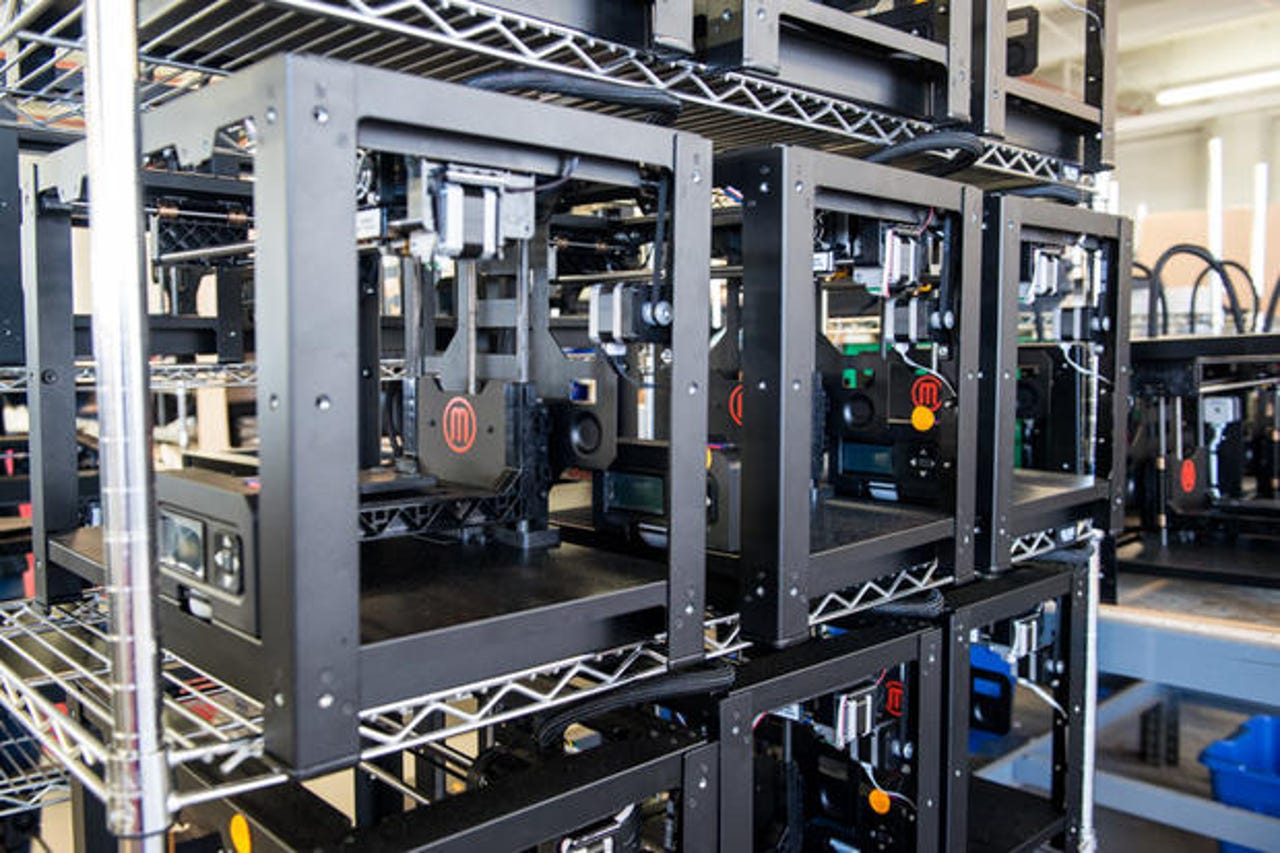What's holding back 3D printing from fulfilling its promise?


Fans of technology are used to broken promises. It's an unfortunate truth that being let down is a part of being an early adopter and technology fans tend to maintain a healthy skepticism of the "next big thing."
3D printing is one of the technologies that is as equally criticized as it is hyped. Maker communities have been built up around tools such as 3D printing, and there are lots of enthusiastic conversations about the potential of 3D printing to revolutionize modern manufacturing.
Unfortunately, it hasn't been able to live up those inflated expectations. 3D printing currently offers exciting new ways to experiment with creating things, but we've still got miles to go before we'll see a 3D printer on every desk.
According to Forrester's Michael Yamnitsky, "The price, performance, and software associated of today's consumer-grade 3D printers are not developing fast enough for 3D printing at home to take off."
And while businesses are adopting 3D printing faster than consumers are, the same obstacles apply — usability, cost, and the time it takes to print.
Let's take a deeper look at some of the main impediments to the pervasiveness of 3D printing technology and tools.
Materials
For those unfamiliar, 3D printing is also known as additive manufacturing, where products are manufactured by layering, or adding, materials on top of each other. The majority of consumer-grade in-home printers operate as either fused deposition modelling (FDM) or stereolithography (SLA), while enterprise applications commonly make use of selective laser sintering (SLS).
FDM is what most people think of when they consider the term 3D printing. It involves a spool of filament, that resembles weed-whacker line, that is fed into a heated extruder, melted, and deposited onto a build platform. SLA, on the other hand shoots a laser into a vat of liquid photopolymer resin, turning it sold in the process, and SLS uses a laser to turn powdered metal into a solid.
While this may seem like a good number of options, these processes and materials are limited in color and texture, and the 3D prints that they produce can usually only be used as rough prototypes.
"Materials are definitely a barrier, we want to go beyond prototypes to make real goods," said Lance Pickens, CEO of MadeSolid, a company working on developing new 3D printing materials. "We need full-color material printers that let us print out objects with color and texture rather than the monochrome 3D printers we have now."
Of course, the three types of 3D printing mentioned earlier are only a few among a host of other 3D printing options, but that doesn't make much of a difference. According to Sophia Vargas, an analyst at Forrester, the availability of 3D printing materials is holding the industry back from disrupting manufacturing.
"Today 3D printers work with approximately 100 materials," Vargas said. "This pales in comparison to the thousands used in traditional manufacturing process. So as it stands, materials are the weakest component of 3D printing. But we are seeing new strides in advanced materials, designed to be stronger, lighter, conductive, or of organic composition."
Many of the 3D printers that print with plastic make use of thermoplastics such as polylactic acid (PLA) or acrylonitrile butadiene styrene (ABS). PLA is commonly used to produce compostable plastic cups and utensils, while ABS is the type of plastic used to manufacture Lego bricks, neither of which inspire utmost confidence in the potential heartiness of a print.
Some are arguing, however that the premise of 3D printing isn't fully realized; that we should be breaking down instead of building up.
"I believe the next step in 3D printing is 3D carving," said Zach Kaplan, CEO of Inventables. "3D carving can be done affordably with wood, plastic, and metal today with desktop tools. As more people begin to experience that in the coming years the promise will be fulfilled."
But, materials don't matter if users can't afford the printers to begin with.
Price and usability
As with many consumer technologies, mass adoption largely depends on price. At this point, most of the available 3D printers have yet to hit a price point that would make consumers, or enterprises for that matter, comfortable enough to purchase one.
"Material costs are negligible compared to the price of the printer which until recently could cost $3,000 - $300,000+ depending on the type," Vargas said.
This is seen most pointedly in the growing online demand for a low-cost 3D printer. For example, the $299 Micro 3D hit its $50,000 goal on Kickstarter in a mere 11 minutes and raised $1 million in about a day. Part of that has to do with the sub-$300 mark, commonly referred to as the tipping point for consumer tech; but it also shows that many interested consumers would be buyers at a lower price.
In addition to price, the complexity of most 3D printers is holding them back. Pete Basiliere, an analyst at Gartner, notes that 3D printers are more complex than paper printers, and haven't been able to deliver on ease of use. People know how 2D paper printers are supposed to work and they project that experience onto 3D printers, which are complex and more difficult to operate.
The majority of that complexity has to do with the software programs that are used to create 3D printable designs.
"Today, you need to be an engineer to create a 3D printable design," Vargas said.
The software is the main bottleneck for proper utilization of 3D printing technology. Because, as Basiliere notes, even in situations where the printers are capable of great things, poor software "inhibits [user's] ability to be as creative as the 3D printing technology enables them to be."
The software in question is based on computer-aided design (CAD) software, a tool that is commonly used by engineers to mock-up 3D models of machines or parts. Pickens said that even with expertise in CAD, it can be difficult and time consuming effort to create an original design or a derivative from an existing design.
Design software isn't the only piece of the creation puzzle. According to Pickens, we need better 3D scanners as well.
"We need accurate 3D scanners for people to begin digitizing the objects that already exist so they can be remixed and shared," Pickens said. "I believe many peoples' first encounter with 3D printing could be with 3D scanning. It's [a] fun and beautiful way for people to begin to understand the power available to them in 3D printing."
Performance and functionality
So far, there is no compelling consumer application for 3D printing and very few for the enterprise. Gartner has made the prediction that there will be a consumer use case by 2016, but we aren't there yet. Even if there were compelling reasons to purchase a 3D printer, modern printers lack the performance and functionality to deliver, beginning with the speed of the prints.
"Today, printing at home is not necessarily faster than buying online. With printing cycles ranging from 6-24 hours – depending on the size and complexity of the object — some printing manufactures like EnvisionTec are working to bring down printing times to differentiate in markets where speed of production is critical," Vargas said.
With Amazon and Google beginning to offer same-day delivery services that could potentially deliver a needed piece or part before you could get it printed, it would eliminate the potential of printing replacement parts as a valid use case. Additionally, what would be delivered would probably have a guarantee or warranty and was, more than likely, built to work for your specific application, which isn't something you can guarantee with a 3D printed part.
For example, if you needed a replacement component for use within your personal automobile, there is no guarantee that the 3D-printed part would be able to withstand the extreme heat and stress placed on it by a combustion engine. You could always 3D print a resin mold and cast the part with molten metal, but that would require a host of other tools and skills.
It's not fair to draw a direct analogy to 2D paper printers, but the fact of the matter is that users will see the name 3D printer and immediately draw a connection to what they are used to using as a 'printer'. Because of that, users will be disappointed when the click 'print' and the machine doesn't just work.
"There are barriers primarily in the usability of the entire stack, software, machines, materials," Pickens said. "No-one has succeeded in making a 3D printer where you just 'hit print' and get the object you want. Various amounts of post-processing have to take place that make the experience frustrating for users. In particular the machines require tuning and babysitting to function properly and often the failure modes are due to engineering flaws that could have been solved."
There is no denying that the potential for 3D printing is gargantuan, but it has a long way to go before it is a household technology. 3D printing has been around since the 1980's, but although it's now more affordable to buy a desktop 3D printer, the technology hasn't yet progressed in a way that makes it attractive to all buyers. The 3D printing industry will need to accelerate its pace if it wants to see 3D printing as the next 'must have' technology for consumers and businesses.